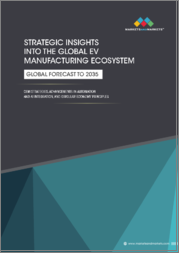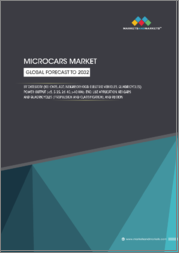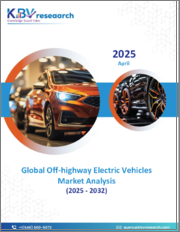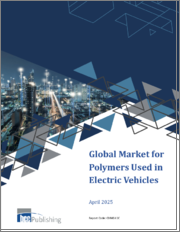
|
시장보고서
상품코드
1647380
전기차 제조 생태계에 대한 전략적 인사이트 : OEM 전략, 자동화 및 AI 통합의 발전, 순환 경제의 원칙 - 전망(-2035년)Strategic Insights Into The Global EV Manufacturing Ecosystem OEM Strategies, Advancements in Automation and AI Integration, and Circular Economy Principles - Global Forecast To 2035 |
||||||
전기차 시장 규모는 2024년 1,570만 7,000대에서 2035년 4,631만 5,000대에 이르면서 CAGR 10.3%로 성장할 것으로 예측됩니다.
전기차 제조업체의 미래는 보다 빠른 생산과 커스터마이징을 가능하게 하는 모듈식, 확장 가능한 조립 플랫폼으로의 전환에 의해 형성될 것으로 보입니다. 테슬라는 코드명 "Redwood"로 불리는 차세대 자동차를 위해 "NV9X"라는 전기차 플랫폼을 개발하고 있으며, 사내에서 이 아키텍처를 사용할 예정입니다. 또한, 자동화와 인공지능을 활용한 제조 공정이 주류가 되어 효율을 높이고 비용을 절감할 수 있습니다. 제조업체들은 배터리 재활용과 지속 가능한 소재에 중점을 두고 순환 경제의 실천을 점점 더 많이 도입할 것으로 예상됩니다. 특히 고체 배터리와 나트륨 이온 배터리의 발전을 위해서는 배터리 제조업체와의 협력이 핵심입니다. 또한, 전기차 제조업체들은 고도의 커넥티비티와 자율주행 기능을 갖춘 프리미엄 제품과 함께 대량 보급을 위해 합리적인 가격대의 모델에 집중할 것입니다.
| 조사 범위 | |
|---|---|
| 조사 대상 연도 | 2024-2035년 |
| 기준 연도 | 2024년 |
| 예측 기간 | 2024-2035년 |
| 대상 수량 | 대수(1,000대) |
| 부문별 | 차종별(승용차, 상용차), 지역별 |
| 대상 지역 | 중국, 아시아태평양(중국 제외), 북미, 유럽 |
승용차 부문은 정부의 인센티브, 엄격한 배기가스 규제, 전기자동차에 대한 소비자의 선호도가 높아지면서 중국 시장 점유율을 독식하고 있습니다. 중국 정부는 면세, 구매 장려금, 인프라 투자 등을 통해 전기차 도입에 막대한 보조금을 지급하고 있으며, 이를 통해 전기차에 대한 접근성을 높이고 있습니다. 또한, 환경 문제에 대한 인식이 높아지고 배터리 기술이 발전함에 따라 전기자동차는 소비자들에게 점점 더 매력적으로 다가오고 있습니다. 이러한 추세를 활용하기 위해 BYD, NIO, Geely, SAIC와 같은 중국 OEM들은 전기차 생산을 강화하기 위해 의욕적인 노력을 기울이고 있습니다. 여기에는 솔리드 스테이트 배터리 및 리튬인산철(LFP) 배터리와 같은 첨단 배터리 기술 개발, 세계 진출 확대, 스마트 제조 시설에 대한 투자 등이 포함됩니다.
각사들은 또한 경쟁이 치열한 전기차 시장에서 차별화를 위해 자율주행 및 커넥티드카 기술과 같은 소프트웨어 통합을 모색하고 있습니다. 또한 리튬, 코발트 등 원자재를 확보하기 위해 세계 및 국내 공급업체와 협력하여 지속가능한 공급망에 대한 약속을 강조하고 있습니다. 향후 중국 OEM들은 혁신적인 모델을 도입하고 생산 능력을 확대하며, 국내외에서 증가하는 합리적인 가격의 프리미엄 전기차에 대한 수요를 충족시켜 세계 전기차 시장을 선도하기 위해 노력하고 있습니다.
플랫폼화 및 플랫폼 공유는 전기차 제조업체들이 확장성, 비용 효율성, 시장 출시 시간 단축을 달성하기 위한 핵심 기술로 부상하고 있습니다. 폭스바겐의 MEB 플랫폼, 현대자동차의 E-GMP, 르노의 CMF-EV와 같은 모듈화되고 유연한 EV 아키텍처를 개발함으로써 자동차 제조업체는 여러 모델과 브랜드를 통해 부품을 표준화하여 생산의 복잡성을 줄이고 규모의 경제를 달성할 수 있습니다. 현대자동차와 기아자동차의 사내 플랫폼 공유 전략은 대중차부터 고급차까지 부문을 뛰어넘어 규모의 경제를 극대화할 수 있습니다.
유럽은 야심찬 기후 정책, 정부의 막대한 인센티브, 엄격한 배출가스 규제로 인해 전기자동차 제조 분야에서 가장 빠르게 성장하는 시장 중 하나가 될 것으로 예상됩니다. 유럽 OEM들은 탄소중립을 달성하고 급증하는 수요에 대응하기 위한 주요 노력을 통해 전기차 생산 능력을 강화하고 있으며, 폭스바겐은 2030년까지 유럽에서 80%의 전기차 판매를 목표로 하는 'Accelerate' 전략을 주도하고 있습니다. BMW는 2030년까지 판매량의 50% 이상을 전기차로 채우겠다는 약속을 하고 있으며, '노이클라쎄' 플랫폼이 차세대 전기차를 뒷받침할 것이며, 메르세데스-벤츠는 전기화 된 생산 설비와 전기화 된 생산 시설을 갖추고 있습니다. 전기화된 생산 설비와 배터리 개발을 위한 파트너십에 힘입어, 여건이 허락하는 시장에서 2030년까지 전기차로 전환하고자 합니다. 한편, Polestar와 Fiske와 같은 소규모 OEM은 틈새 수요를 충족시키기 위해 최첨단 EV 모델을 출시하고 있습니다. 이 지역은 또한 유럽 배터리 얼라이언스(European Battery Alliance)와 같은 이니셔티브와 지속 가능한 전기차 제조를 위한 재생 에너지 통합에 대한 투자로 뒷받침되는 탄탄한 배터리 공급망 생태계의 혜택을 누리고 있습니다.
이 보고서는 세계 전기자동차 시장을 조사했으며, 전기자동차 제조 동향, 지역별 동향, 시장 진출기업 프로파일 등을 정리한 보고서입니다.
목차
제1장 서론
제2장 주요 요약
제3장 전기자동차 시장 구도
- 서론
- 지역별 전기자동차 판매 대수
- 전기자동차 판매 대수(차량 유형별)
- ICE 및 전동 모빌리티 판매 예측
- 정부의 규제
- 정부의장려책과 보조금
- 무공해 차량에 관한 주요 정책과 개발 목표
- 무공해 차량에의 주요 투자와 개발 목표
- 자사 생산과 OEM별 아웃소싱
- 전기자동차 배터리 제조능력
제4장 전기자동차 제조 현황과 향후 동향
- 서론
- 디자인
- 프로토타이핑
- 주요 부품 제조
- 조립
- 기가 팩토리의 주요 발전
- 기가 캐스팅의 주요 발전
제5장 기업 개요
- TESLA
- BYD AUTO CO., LTD
- VOLKSWAGEN AG
- ZHEJIANG GEELY HOLDING GROUP
- SAIC MOTOR
- STELLANTIS NV
- BMW GROUP
- HYUNDAI GROUP
- FORD MOTOR COMPANY
- GENERAL MOTORS
- RENAULT GROUP
- TATA MOTORS LIMITED
- MAHINDRA & MAHINDRA LTD.
- TOYOTA MOTOR CORPORATION
제6장 중요 포인트와 추천 사항
제7장 부록
LSH 25.02.24The Electric Vehicle market size is projected to grow from 15,707 thousand units in 2024 to 46,315 thousand units by 2035, at a CAGR of 10.3%. The future of EV manufacturers will be shaped by a shift to modular and scalable assembly platforms that enable faster production and customization. Tesla is developing an electric car platform called "NV9X" for their next-generation vehicle, codenamed "Redwood," which will use this architecture internally. Further, Automation and artificial intelligence-driven manufacturing processes will dominate, increasing efficiency and reducing costs. Manufacturers will increasingly integrate circular economy practices, emphasizing battery recycling and sustainable materials. Collaboration with battery manufacturers will be key, especially for the advancement of solid-state and sodium-ion batteries. In addition, EV manufacturers will focus on affordable models to achieve mass adoption, alongside premium offerings with advanced connectivity and autonomous driving capabilities.
| Scope of the Report | |
|---|---|
| Years Considered for the Study | 2024-2035 |
| Base Year | 2024 |
| Forecast Period | 2024-2035 |
| Units Considered | Volume (Thousand Units) |
| Segments | by Vehicle type (Passenger Cars and Commercial Vehicles), and Region |
| Regions covered | China, Asia Pacific (excl. China), North America, and Europe |
"Passenger cars segment is estimated to hold the largest market share during the forecast period."
The passenger car segment dominates market share in China thanks to a combination of government incentives, strict emissions regulations and growing consumer preference for electric vehicles. The Chinese government has heavily subsidized EV adoption through tax exemptions, purchase incentives and infrastructure investment, making EVs more affordable. Further, rising awareness of environmental issues and advances in battery technology have made electric vehicle increasingly attractive to consumers. To capitalize on this trend, Chinese OEMs such as BYD, NIO, Geely and SAIC are ramping up EV production with ambitious initiatives. These include developing advanced battery technologies such as solid-state and lithium iron phosphate (LFP) batteries, expanding global footprints and investing in smart manufacturing facilities. Companies are also looking to integrate software such as autonomous driving and connected car technology to differentiate themselves in the competitive electric vehicle market. Additionally, partnerships with global and domestic suppliers to secure raw materials such as lithium and cobalt underline their commitment to a sustainable supply chain. Looking ahead, Chinese OEMs are striving to lead the global EV market by introducing innovative models, expanding production capacity, and meeting the growing demand for affordable and premium EVs at domestically and internationally.
"Development in EV platformization and platform sharing boosting the EV manufacturing process"
Platformization and platform sharing have emerged as important techniques for electric vehicle manufacturers to acquire scalability, cost performance, and faster time-to-market. By developing modular and bendy EV architectures, inclusive of Volkswagen's MEB platform, Hyundai's E-GMP, and Renault's CMF-EV, automakers can standardize components throughout multiple models and brands, decreasing production complexity and achieving economies of scale. Hyundai and Kia's internal platform-sharing strategy maximizes economies of scale across segments, from mainstream to luxury vehicles. The Electric Global Modular Platform (E-GMP) underpins models like Hyundai Ioniq 5/6/7, Kia EV6, and Genesis GV60. Further, These systems assist various automobile types, together with sedans, SUVs, and even business vehicles, enabling producers to cater to diverse market segments with minimum layout modifications. In May 2024, SAIC Motor and Audi officially signed a cooperation agreement to jointly expand the Advanced Digitized Platform, following a memorandum of information signed in July 2023. This trend not only lowers production costs but also facilitates advancements in battery technology, software integration, and autonomous driving systems, as shared platforms provide a consistent foundation for implementing new features across a wider vehicle lineup. As an end result, platform sharing is poised to accelerate the transition to electrification at the same time as improving profitability and sustainability for producers globally.
"Europe is anticipated to be one of the fastest markets over the forecast period."
Europe is poised to be one of the fastest-growing market for electric vehicle manufacturing, driven by ambitious climate policies, significant government incentives, and stringent emissions regulations. European OEMs are ramping up their EV production capacities, with major initiatives focused on achieving carbon neutrality and meeting surging demand. Volkswagen is leading the charge with its "Accelerate" strategy, targeting 80% EV sales in Europe by 2030 and investing heavily in battery gigafactories under its PowerCo division. BMW is committed to making at least 50% of its sales electric by 2030, with its "Neue Klasse" platform set to underpin its next-generation EVs. Mercedes-Benz is transitioning to an all-electric future by 2030 in markets where conditions allow, supported by its electrified production facilities and partnerships for battery development. Meanwhile, smaller OEMs like Polestar and Fisker are introducing cutting-edge EV models to meet niche demands. The region also benefits from a robust ecosystem of battery supply chains, supported by initiatives like the European Battery Alliance, and investments in renewable energy integration for sustainable EV manufacturing.
- By Company Type: Tier 1 - 60%, OEM - 40%.
- By Designation: C Level - 40%, D Level - 35%, and Others - 25%
- By Region: North America - 20%, Europe - 30%, Asia Pacific (excl. China) - 35%, and China- 15%
Research Coverage:
Future of EV manufacturing market is segmented by vehicle type (Passenger Cars and Commercial Vehicles) and region (China, Asia Pacific (excl. China), Europe, and North America). The market study includes future strategies by OEMs, EV Ecosystem, Current and Future Trends in EV manufacturing and Regulatory Framework.
Reasons to buy this report:
The report will provide market leaders and new entrants with information on the closest approximations of the sales numbers for the EV market and its subsegments. It will also help stakeholders understand the competitive landscape and gain more insights to better position their businesses and plan suitable go-to-market strategies.
The report provides insights on the following pointers:
Technology Analysis: Insights on current and upcoming technologies, future investments, and critical OEMs and supplier strategies. Covered major electric components, technological trends such as the platform sharing, and market players providing these.
- Market Landscape by vehicle type (Passenger Cars and Commercial Vehicles), by region (China, Asia Pacific (excl. China), Europe, and North America).
- Supplier Analysis: The report analyzes market players, growth strategies, and product offerings of leading players. It also helps stakeholders understand the strategy of the EV manufacturers and provides information on their recent developments and investments in the market. OEM-wise decarbonization targets are also covered.
TABLE OF CONTENTS
1 INTRODUCTION
- 1.1 MARKET DEFINITION
- 1.2 STUDY SCOPE
- 1.2.1 MARKET SEGMENTATION
- 1.2.2 INCLUSIONS AND EXCLUSIONS
- 1.3 RESEARCH METHODOLOGY
- 1.4 RESEARCH DATA
- 1.4.1 SECONDARY DATA
- 1.4.1.1 Secondary sources
- 1.4.2 PRIMARY DATA
- 1.4.3 RESEARCH LIMITATIONS
- 1.4.1 SECONDARY DATA
2 EXECUTIVE SUMMARY
- 2.1 ELECTRIC VEHICLE PLATFORMIZATION
- 2.2 CIRCULAR ECONOMY STRATEGIES
- 2.3 ELECTRIC VEHICLE MARKET, BY VEHICLE TYPE
- 2.4 ELECTRIC VEHICLE MARKET, BY REGION
- 2.5 CONCLUSION
3 ELECTRIC VEHICLE MARKET LANDSCAPE
- 3.1 INTRODUCTION
- 3.2 ELECTRIC VEHICLE SALES, BY REGION
- 3.3 ELECTRIC VEHICLE SALES, BY VEHICLE TYPE
- 3.3.1 PASSENGER CARS
- 3.3.1.1 Availability of subsidies and tax rebates to drive growth
- 3.3.2 COMMERCIAL VEHICLES
- 3.3.2.1 Rising demand for efficient long-haul transportation to drive market
- 3.3.1 PASSENGER CARS
- 3.4 SALES FORECAST FOR ICE AND ELECTRIC MOBILITY
- 3.4.1 CHINA
- 3.4.2 ASIA PACIFIC (EXCLUDING CHINA)
- 3.4.3 EUROPE
- 3.4.4 NORTH AMERICA
- 3.5 GOVERNMENT REGULATIONS
- 3.6 GOVERNMENT INCENTIVES AND SUBSIDIES
- 3.7 KEY POLICIES AND DEVELOPMENT TARGETS FOR ZERO-EMISSION VEHICLES
- 3.8 KEY INVESTMENT AND DEVELOPMENT TARGETS FOR ZERO-EMISSION VEHICLES
- 3.9 IN-HOUSE PRODUCTION VS. OUTSOURCING, BY OEMS
- 3.10 ELECTRIC VEHICLE BATTERY MANUFACTURING CAPACITY
- 3.10.1 ELECTRIC VEHICLE BATTERY MANUFACTURING CAPACITY, BY COUNTRY, 2021-2025
- 3.10.2 ELECTRIC VEHICLE BATTERY MANUFACTURING CAPACITY OF KEY PLAYERS, 2030
4 CURRENT AND FUTURE TRENDS IN ELECTRIC VEHICLE MANUFACTURING
- 4.1 INTRODUCTION
- 4.2 DESIGN
- 4.3 PROTOTYPING
- 4.4 MANUFACTURING OF KEY COMPONENTS
- 4.4.1 BATTERY
- 4.4.2 MOTOR
- 4.4.3 BATTERY MANAGEMENT SYSTEM
- 4.5 ASSEMBLY
- 4.6 KEY DEVELOPMENTS IN GIGAFACTORIES
- 4.6.1 UPCOMING GIGAFACTORIES BY KEY OEMS
- 4.6.1.1 Tesla
- 4.6.1.2 BYD
- 4.6.1.3 CATL
- 4.6.2 UPCOMING GIGAFACTORIES, BY REGION
- 4.6.2.1 Europe
- 4.6.2.1.1 Upcoming gigafactories in Europe, 2027
- 4.6.2.2 North America
- 4.6.2.2.1 Upcoming gigafactories in North America, 2027
- 4.6.2.3 Asia Pacific
- 4.6.2.3.1 Upcoming gigafactories in Asia Pacific, 2027
- 4.6.2.1 Europe
- 4.6.1 UPCOMING GIGAFACTORIES BY KEY OEMS
- 4.7 KEY DEVELOPMENTS IN GIGA CASTING
- 4.7.1 INTRODUCTION
- 4.7.2 LIST OF GIGA CASTING ADOPTION PLANS BY KEY AUTOMAKERS
5 COMPANY PROFILES
- 5.1 TESLA
- 5.1.1 COMPANY OVERVIEW
- 5.1.2 CIRCULAR ECONOMY STRATEGY
- 5.1.2.1 Recycled materials/components
- 5.1.3 FUTURE PLANS FOR ELECTRIC VEHICLE PRODUCTION
- 5.1.3.1 Role of AI
- 5.1.3.2 Digitization/Smart manufacturing factory
- 5.1.4 PLATFORMIZATION
- 5.2 BYD AUTO CO., LTD
- 5.2.1 COMPANY OVERVIEW
- 5.2.2 CIRCULAR ECONOMY STRATEGY
- 5.2.2.1 Recycled materials/components
- 5.2.3 FUTURE PLANS FOR ELECTRIC VEHICLE PRODUCTION
- 5.2.3.1 Role of AI
- 5.2.3.2 Digitization/Smart manufacturing factory
- 5.2.4 PLATFORMIZATION
- 5.3 VOLKSWAGEN AG
- 5.3.1 COMPANY OVERVIEW
- 5.3.2 CIRCULAR ECONOMY STRATEGY
- 5.3.2.1 Recycled materials/components
- 5.3.3 FUTURE PLANS FOR ELECTRIC VEHICLE PRODUCTION
- 5.3.3.1 Role of AI
- 5.3.3.2 Digitization/Smart manufacturing factory
- 5.3.4 PLATFORMIZATION
- 5.4 ZHEJIANG GEELY HOLDING GROUP
- 5.4.1 COMPANY OVERVIEW
- 5.4.2 CIRCULAR ECONOMY STRATEGY
- 5.4.2.1 Recycled materials/components
- 5.4.3 FUTURE PLANS FOR ELECTRIC VEHICLE PRODUCTION
- 5.4.3.1 Role of AI
- 5.4.3.2 Digitization/Smart manufacturing factory
- 5.4.4 PLATFORMIZATION
- 5.5 SAIC MOTOR
- 5.5.1 COMPANY OVERVIEW
- 5.5.2 CIRCULAR ECONOMY STRATEGY
- 5.5.2.1 Recycled materials/components
- 5.5.3 FUTURE PLANS FOR ELECTRIC VEHICLE PRODUCTION
- 5.5.3.1 Role of AI
- 5.5.3.2 Digitization/Smart manufacturing factory
- 5.5.4 PLATFORMIZATION
- 5.6 STELLANTIS NV
- 5.6.1 COMPANY OVERVIEW
- 5.6.2 CIRCULAR ECONOMY STRATEGY
- 5.6.2.1 Recycled materials/components
- 5.6.3 FUTURE PLANS FOR ELECTRIC VEHICLE PRODUCTION
- 5.6.3.1 Role of AI
- 5.6.3.2 Digitization/Smart manufacturing factory
- 5.6.4 PLATFORMIZATION
- 5.7 BMW GROUP
- 5.7.1 COMPANY OVERVIEW
- 5.7.2 CIRCULAR ECONOMY STRATEGY
- 5.7.2.1 Recycled materials/components
- 5.7.3 FUTURE PLANS FOR ELECTRIC VEHICLE PRODUCTION
- 5.7.3.1 Role of AI
- 5.7.3.2 Digitization/Smart manufacturing factory
- 5.7.4 PLATFORMIZATION
- 5.8 HYUNDAI GROUP
- 5.8.1 COMPANY OVERVIEW
- 5.8.2 CIRCULAR ECONOMY STRATEGY
- 5.8.2.1 Recycled materials/components
- 5.8.3 FUTURE PLANS FOR ELECTRIC VEHICLE PRODUCTION
- 5.8.3.1 Role of AI
- 5.8.3.2 Digitization/Smart manufacturing factory
- 5.8.4 PLATFORMIZATION
- 5.9 FORD MOTOR COMPANY
- 5.9.1 COMPANY OVERVIEW
- 5.9.2 CIRCULAR ECONOMY STRATEGY
- 5.9.2.1 Recycled materials/components
- 5.9.3 FUTURE PLANS FOR ELECTRIC VEHICLE PRODUCTION
- 5.9.3.1 Role of AI
- 5.9.3.2 Digitization/Smart manufacturing factory
- 5.9.4 PLATFORMIZATION
- 5.10 GENERAL MOTORS
- 5.10.1 COMPANY OVERVIEW
- 5.10.2 CIRCULAR ECONOMY STRATEGY
- 5.10.2.1 Recycled materials/components
- 5.10.3 FUTURE PLANS FOR ELECTRIC VEHICLE PRODUCTION
- 5.10.3.1 Role of AI
- 5.10.3.2 Digitization/Smart manufacturing factory
- 5.10.4 PLATFORMIZATION
- 5.11 RENAULT GROUP
- 5.11.1 COMPANY OVERVIEW
- 5.11.2 CIRCULAR ECONOMY STRATEGY
- 5.11.2.1 Recycled materials/components
- 5.11.3 FUTURE PLANS FOR ELECTRIC VEHICLE PRODUCTION
- 5.11.3.1 Role of AI
- 5.11.3.2 Digitization/Smart manufacturing factory
- 5.11.4 PLATFORMIZATION
- 5.12 TATA MOTORS LIMITED
- 5.12.1 COMPANY OVERVIEW
- 5.12.2 CIRCULAR ECONOMY STRATEGY
- 5.12.2.1 Recycled materials/components
- 5.12.3 FUTURE PLANS FOR ELECTRIC VEHICLE PRODUCTION
- 5.12.3.1 Role of AI
- 5.12.3.2 Digitization/Smart manufacturing factory
- 5.12.4 PLATFORMIZATION
- 5.13 MAHINDRA & MAHINDRA LTD.
- 5.13.1 COMPANY OVERVIEW
- 5.13.2 CIRCULAR ECONOMY STRATEGY
- 5.13.2.1 Recycled materials/components
- 5.13.3 FUTURE PLANS FOR ELECTRIC VEHICLE PRODUCTION
- 5.13.3.1 Digitization/Smart manufacturing factory
- 5.13.4 PLATFORMIZATION
- 5.14 TOYOTA MOTOR CORPORATION
- 5.14.1 COMPANY OVERVIEW
- 5.14.2 CIRCULAR ECONOMY STRATEGY
- 5.14.2.1 Recycled materials/components
- 5.14.3 FUTURE PLANS FOR ELECTRIC VEHICLE PRODUCTION
- 5.14.3.1 Role of AI
- 5.14.3.2 Digitization/Smart manufacturing factory
- 5.14.4 PLATFORMIZATION
6 KEY TAKEAWAYS AND RECOMMENDATIONS
- 6.1 KEY TAKEAWAYS
- 6.2 ADVANCEMENTS IN ELECTRIC VEHICLE MANUFACTURING
- 6.3 DEVELOPMENT OF SMART MANUFACTURING FACILITIES
- 6.4 SHIFT TOWARD CIRCULAR ECONOMY
- 6.5 CHINA'S DOMINANCE IN GLOBAL ELECTRIC VEHICLE MARKET
7 APPENDIX
- 7.1 KEY INSIGHTS FROM INDUSTRY EXPERTS
- 7.2 DISCUSSION GUIDE
- 7.3 KNOWLEDGESTORE: MARKETSANDMARKETS' SUBSCRIPTION PORTAL
- 7.4 CUSTOMIZATION OPTIONS
- 7.4.1 ADDITIONAL COMPANY PROFILES (UP TO 5)
- 7.4.2 COUNTRY-LEVEL ELECTRIC VEHICLE MARKET, BY PROPULSION (FOR COUNTRIES COVERED IN THE REPORT)
- 7.4.3 COUNTRY-LEVEL ELECTRIC VEHICLE MARKET, BY BATTERY TYPE (FOR COUNTRIES COVERED IN THE REPORT)
- 7.5 RELATED REPORTS
- 7.6 AUTHOR DETAILS



















